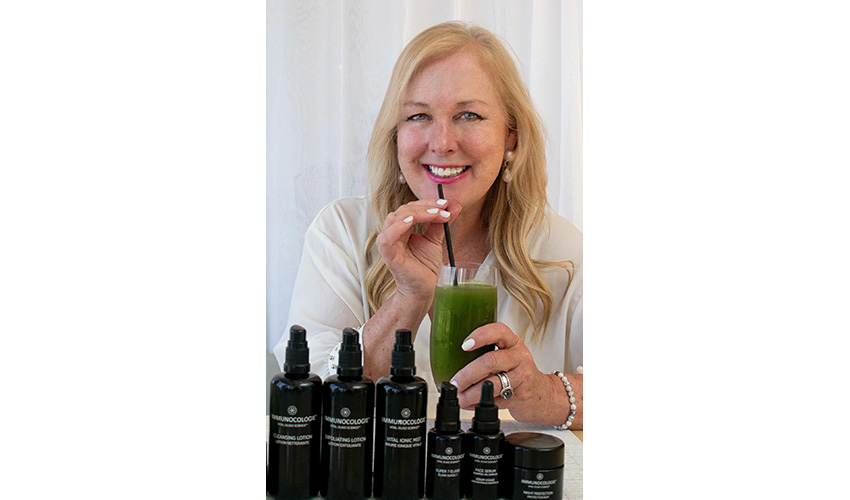Everyone wants a beautiful smile, right? About 48% of Americans say a smile is the most memorable feature after first meeting someone.
But very few of us are born with sparkling white, well-shaped, “perfect teeth.”
A smile makeover is the process of improving, or perfecting, the look of your smile through the use of different cosmetic dental procedures.
What can your dentist fix with a smile makeover?
A Rejuvenation Smile Makeover may include one or several of the following:
- Restoring missing teeth
- Replacing fillings and crowns
- Repairing chipped or decayed teeth
- Whitening teeth
- Aligning the bite
- Changing the contour of the teeth and gums
- Other procedures that will improve your overall dental health
- Removing harmful metals from the mouth (like amalgam fillings)
- Treating periodontal (gum) disease
- Restoring bone integrity with grafts
What is the difference between a smile makeover and a full mouth reconstruction? A smile makeover involves one or more primarily cosmetic dental procedures to improve the appearance of your teeth and gums. A full mouth reconstruction is a much more invasive process by which the jaws are totally rebuilt and restored, typically after years of significant dental health problems.
1. Bonded Teeth
Dental bonding is the procedure whereby resin is applied to individual teeth to repair chips or discolorations. Bonded teeth, when cared for properly, can last as long as 10 years.
Bonding requires one visit of anywhere from 10-60 minutes, depending on how many teeth are being bonded and the complexity of damage to the teeth.
Pros of dental bonding:
- Relatively low cost — some of the least expensive cosmetic dental work
- Simple, non-invasive procedure
- No need for anesthesia (in almost all cases)
- Natural tooth enamel is not compromised as much as for veneers
- Whitening is possible but should be done only after a dental consult
Cons of dental bonding:
- The composite resin isn’t as stain-resistant as the material used for crowns or veneers
- Bonding has to be redone more frequently, typically every 5-10 years
- Bonding resin isn’t as durable as other restorative materials
- It’s not a good option for all your teeth; bonding typically should only be done to front teeth that chew much less than side or back teeth
2. Crowns
A dental crown placed over a damaged tooth provides not only a more visibly appealing smile but also a more visible, vibrant, and confident person.
Crowns are made from several different materials:
- Metal
- Resin
- Ceramic
- Porcelain
Rejuvenation Dentistry proudly uses CEREC technology to fabricate the ideal dental crown for your smile.
CEREC utilizes advanced 3D CAD imaging software and milling equipment to design and create a crown, often made of a strong ceramic. This procedure can be done in just one visit to our office.
3. Teeth Whitening
Possibly the most popular cosmetic procedure on the market, teeth whitening is a quick option to brighten your smile and revamp your image.
However, over-the-counter teeth whiteners can damage your teeth and gums when used incorrectly or too often. Whitening products are not tightly regulated, so they do pose some risk. Also, OTC products don’t require the user to keep up overall oral health.
Are you overdoing the treatment (thinking more is better)? Are you paying attention to the effects of damage from oxidation caused by most whitening products, like whitening strips?
I developed a unique, patented process exclusively used by the Rejuvenation Dentistry team.
One of our cosmetic dentists will begin with a consultation and treatment plan for Brighten and Balance Teeth Whitening. Then, using our one-of-a-kind technology, an antioxidant gum mask (reducing chance of gum disease), and homeopathic formula, NuPath Bioactives, you’ll leave with a dazzling smile!
We even give you a tube of NuPath for a follow-up application.
4. Braces/Invisalign
Turning crooked teeth into a new smile has been done since the early-mid 1800s, though technology and materials used have dramatically changed over time.
Today, the most common choices are traditional braces or Invisalign.
Here are just a few pros and cons of each:
Pros of Invisalign
- Less visible for a more pleasing facial esthetic
- Can be removed to eat
- Removing allows for simpler brushing and flossing
- More minor discomfort than braces (not pain-free, but has fewer mouth/gum issues)
- Requires fewer orthodontist visits
Cons of Invisalign
- Requires discipline (because they’re so easily removed)
- Can also be inconvenient to remove in public (but food and drink can stain the aligners)
- Cost may surpass that of braces
- Not for more complex orthodontic situations
- May require added attachments that can resemble the look of braces
Pros of Traditional Braces
- Suitable for any level of treatment
- Can produce more precise results than Invisalign for complex cases
- Several types are available — lingual, ceramic, etc.
- Treatment time is faster
Cons of Traditional Braces
- Less aesthetically pleasing
- Brushing and flossing are more difficult
- Food choices have to be considered more carefully
- More orthodontist visits are required
- May damage soft tissue within the mouth
- May leave spots of discoloration on teeth
- May be coated with Teflon, which is associated with a large number of health concerns
5. Veneers
Porcelain veneers are thin shells that cover the front surface of discolored, cracked, or broken teeth. They are bonded permanently to the tooth, giving a more natural and durable result.
Veneers are a trendy option to improve the appearance of your smile. However, they also require a portion of your enamel to be removed to accommodate your bite.
Some patients shy away from this option because of the permanent enamel removal. But most folks who want the smile of their dreams consider this a worthwhile sacrifice.
Lumineers are very similar to veneers, but the material is thinner. This difference negates the need to remove enamel, making them a popular dental treatment for many patients. They’re also a less expensive option.
However, Lumineers aren’t as durable or long-lasting as veneers, and the thinness of the material is not as effective at hiding damaged or discolored teeth.
Carefully discuss all the treatment options available with your dentist, then decide the best one for you.
6. Dental Implants
A dental implant replaces an extracted tooth with an artificial tooth root, like a screw, that is surgically inserted in the jawbone. It is one of the most expensive and most successful dental procedures for restoring missing teeth.
Because surgery is required, the process takes several steps:
- Consultation
- X-rays
- Impressions
- Tooth extraction
- Implant placement
- Abutment placement
- Permanent crown
How does a dental bridge compare to a dental implant? While dental implants are considered the gold standard in tooth replacement, they may not be suitable for everyone. Dental bridges may be a more acceptable option for your specific needs.
Look at the big picture with your dental professional so you can work together on a treatment plan perfectly suited to you.
7. Gum Reshaping
Little teeth, from natural shape, wear and tear, or bruxism create a gummy smile. Many people with this never consider cosmetic treatment. However, creating larger-looking teeth is a relatively simple procedure that requires only a few visits to complete.
Another option to address small teeth is gum reshaping. This process is an essential part of fitting porcelain veneers or crowns.
Because the procedure involves reshaping the gum line, there may be some pain or discomfort after the procedure relative to each patient’s tolerance. But if you’re unhappy with the size or length of your teeth, this may be the perfect option.
Also known as gum contouring, the treatment often involves a single visit to the dental office. Another positive aspect of this is that it’s permanent, since gum tissue doesn’t regrow.
Benefits of a Smile Makeover
Most of us want a beautiful smile. And the great news is that achieving one isn’t nearly as difficult as you might think!
So many concerns with our natural teeth (or lack thereof) can be resolved with a smile makeover, such as:
- Missing teeth
- Decayed or eroded teeth
- Stained or discolored teeth
- A gummy smile or small teeth
- Crooked teeth
- Bad spacing between teeth (overbite, underbite, open bite, and/or crossbite)
Just formulating a makeover plan is exciting. Imagine how you’ll feel once your smile makeover treatment is completed and you dazzle even yourself with the final results!
Smile Makeover Cost
How much does it cost to fix your smile? It costs anywhere from $150-$8,000 per tooth to fix your smile with a smile makeover.
Improving the look of your smile with a smile makeover ranges significantly in cost because of the broad range of treatments that you may choose. For instance, bonding for a single tooth can run just a few hundred dollars, while veneers or multiple dental implants can quickly drive your cost to $2,500 or more per tooth.
Is a smile makeover covered by dental insurance?
Many insurance companies have allowances for a wide range of makeover procedures. The critical consideration is whether the treatment plan is medically necessary or for facial esthetics only.
For example, suppose dental fillings, root canals, or additional dental restorations are done because of tooth decay or other damage. In that case, your insurance is more likely to cover some of the cost.
However, if your smile design is something you want, as opposed to dental care you need for oral health, insurance may require you to pay those costs out of pocket.
Speak with your dentist’s front office staff before having any cosmetic dentistry procedure. Most offices have payment plans or other methods of financing, especially for more advanced procedures.
How to Maintain Your Smile Makeover
Maintaining your new smile is vitally important. Without routine checkups to your dentist, all the time, money, and effort put into the appearance of your smile could begin to erode. Regular cleanings, x-rays, etc., could catch issues before they become emergencies.
Listen to all the advice your dental professional offers, particularly about daily care. Whether your beautiful smile is a full set or partial dentures, or the best medical advice was for more invasive treatment, a smile makeover will last longer with consistent care.
Get a Smile Makeover in New York, NY
At Rejuvenation Dentistry, we believe that a complete smile makeover will make the flaws disappear.
In just a few visits and carefully selected cosmetic dentistry procedures, not only will your appearance be transformed, but your confidence will be lifted.
Our team has decades of combined experience in cosmetic dentistry. And what’s more, we focus on taking a biological, holistic approach to your smile makeover that will complement your uniqueness without harming your health.




